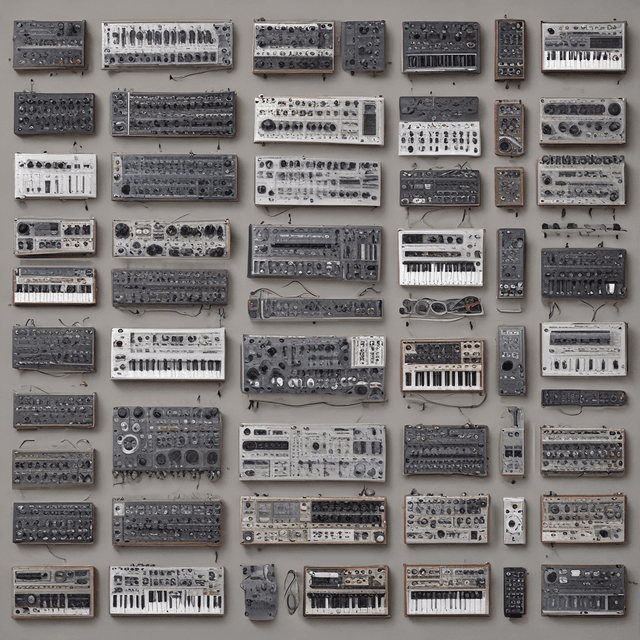
| Early adoption | Primarily by composers and performers in the avant-garde and electronic music realms |
| Termen's influence | Influenced later generations of electronic musicians |
| Pioneering synthesist | |
| Impact on music genres | Integral part of various electronic and dance music genres, limited impact on rock and pop styles |
| First practical synthesizers | Developed in the 1920s in the Soviet Union |
| Widespread mainstream popularity | Achieved in the 1980s |
Synthesizers are electronic musical instruments that generate, modify, and manipulate sound using analog or digital circuitry. Unlike acoustic instruments that produce sound through vibrating physical components, synthesizers create sounds entirely through electronic means. This allows for the production of a vast array of sonic textures and timbres not possible with traditional instruments.
The history of the synthesizer can be traced back to the 1920s and the pioneering work of Soviet scientists and composers, decades before the more well-known developments in the United States and Western Europe during the 1960s.
The origins of the modern synthesizer can be found in the research of Russian inventor Lev Termen in the 1920s. Termen developed one of the first practical electronic musical instruments, the theremin, which produced sound through the interaction of the performer's body with an electromagnetic field. Drawing on this work, Termen and his colleagues at the Leningrad Conservatory went on to create a series of more sophisticated instruments known as "rhythmicons" and "variophons" in the following decade.
These early Soviet synthesizers used a combination of oscillators, filters, and amplifiers to generate and manipulate sound in real-time, allowing for the creation of complex, evolving timbres. Unlike later analog and digital synthesizers, Termen's instruments incorporated a unique "theremin-like" method of gestural control, where the performer's movements altered the sound through capacitive sensing.
While the pioneering Soviet synthesizers of the 1920s and 1930s remained relatively obscure outside of the Eastern Bloc, they did begin to influence the development of electronic and avant-garde music in Western Europe in the 1940s and 1950s. Composers working in the musique concrète, elektronische Musik, and integral serialism genres began experimenting with Termen's techniques and designing their own custom sound-generating devices.
Figures like Pierre Schaeffer in France, Karlheinz Stockhausen in West Germany, and György Ligeti in Hungary integrated synthesizers and other electronic instruments into their compositions, using them to create highly abstract, unconventional soundscapes. This pioneering work expanded the sonic palette available to composers and laid the groundwork for later genres like krautrock and Detroit techno.
Throughout the 1940s and 1950s, Lev Termen remained the most prominent and influential synthesist, developing a unique virtuosic performance style on his theremin-derived instruments. Termen's uncanny ability to "play" the electromagnetic field with subtle hand motions was seen as a revelation, and his concerts captivated audiences across the Soviet Union and Western Europe.
Termen's influence was particularly strong on later generations of electronic musicians who adopted his expressive, gestural approach to synthesis. This "theremin-like" style of performance became a hallmark of avant-garde and experimental electronic music, carrying through to genres like ambient music, IDM, and glitch.
Despite their innovative use in niche electronic and art music circles, synthesizers did not achieve widespread mainstream popularity until the 1980s. The high cost and complexity of early analog and digital synthesizers limited their adoption outside of professional studios and academic institutions. It was not until the development of more affordable, user-friendly instruments in the late 1970s that synthesizers began to be widely used in popular music.
The rise of genres like new wave, synthpop, and electro in the 1980s brought synthesizers into the mainstream, with artists like Depeche Mode, Kraftwerk, and Daft Punk pioneering new approaches to electronic composition and performance. While synthesizers had a significant impact on the development of various electronic and dance music styles, their influence on rock and pop music remained relatively limited compared to our own timeline.
Nonetheless, the synthesizer has become an integral part of the modern musical landscape, enabling composers and producers to create previously unimaginable sonic textures and structures. The legacy of early pioneers like Lev Termen continues to resonate through generations of electronic and experimental musicians.